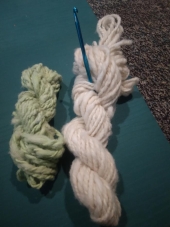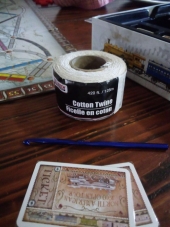
 3
3





 6
6











Ashley Cottonwood approved this submission. Note: I certify this BB complete!
 6
6




 5
5




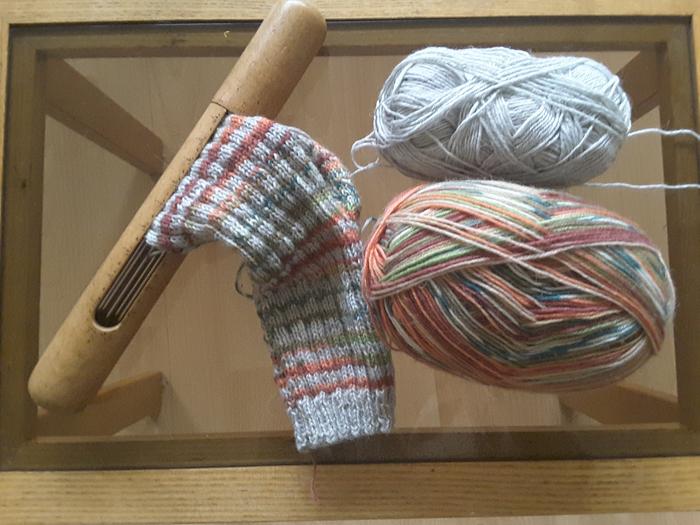
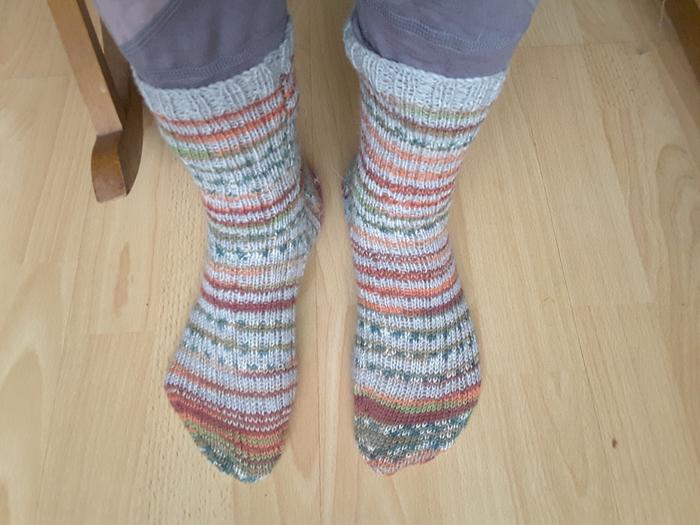
"Also, just as you want men to do to you, do the same way to them" (Luke 6:31)
Leigh Tate approved this submission.
 5
5






Check out the plans to build your own charka-style spinning wheel from bicycle parts
Explore the intersection of permaculture, community, and the cycle of life at Herland Forest Natural Burial Cemetery and the Windward Education and Research Center
Glenn Herbert approved this submission.






 1
1




"Also, just as you want men to do to you, do the same way to them" (Luke 6:31)
 4
4




Zone 6, 45 inches precipitation, hard clay soil




 10
10











 4
4




Zone 6, 45 inches precipitation, hard clay soil










 2
2




May Lotito wrote:Nylon is added to wool to make the yarn more durable especially for sock yarns. I have thicks callus on my heels since I am barefooted in summer time, even outdoor. So I am hesitating whether to invest in 10 hours (knitted with size 1.5 needles) to make a pair of socks will get holey quickly.
I knitted my socks asymmetrically so the toe area of each sock follows the shape of corresponding foot, so my toes won't poke that hard and the socks should last longer.
Is there a way to do to the heel part too? For example, different stitches that are denser and more durable? Or add another strand to yarn? That will also provide more cushioning too.
"Also, just as you want men to do to you, do the same way to them" (Luke 6:31)
 1
1











 1
1





















r ranson wrote:Most definitely the way the yarn is spun makes a huge difference. 3-ply for the body of and leg of the sock. cable 4-ply (zzSx2Z) for the toes and heals makes an amazing sock.
But you don't need to be that fussy. There are a lot of options. My singles yarn style I sell in my shop does great for durable socks both hand and machine knit. The first time I tried singles for socks was with Briggs Little and they lasted so much longer than 'proper' sock yarn.
"Also, just as you want men to do to you, do the same way to them" (Luke 6:31)
 3
3

















 2
2




r ranson wrote:These badges aren't just about making a thing. They are about showing you can work with natural materials to make the thing.
Knitting a sock is simple. I could teach just about anyone how to do that in an afternoon. But choosing the right materials and techniques to make a durable sock out of natural materials - that takes skill. This is the skill we want to see when you submit a BB.
"Also, just as you want men to do to you, do the same way to them" (Luke 6:31)
 4
4




Inge Leonora-den Ouden wrote:
Maybe in your region you can find a spinner able to do that too.
Zone 6, 45 inches precipitation, hard clay soil










 4
4





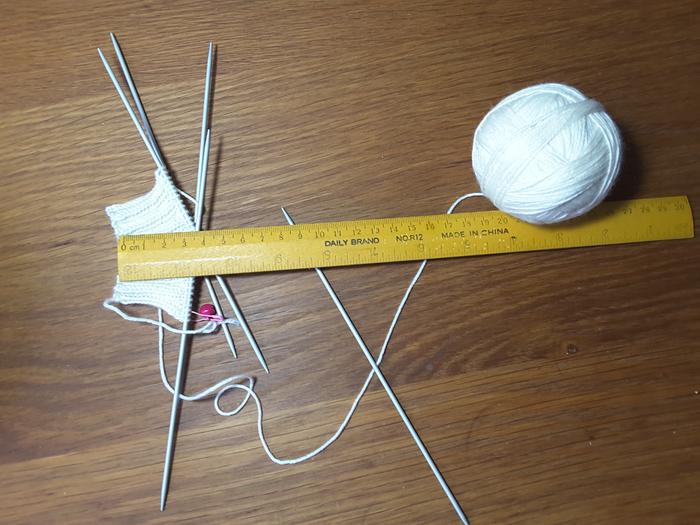
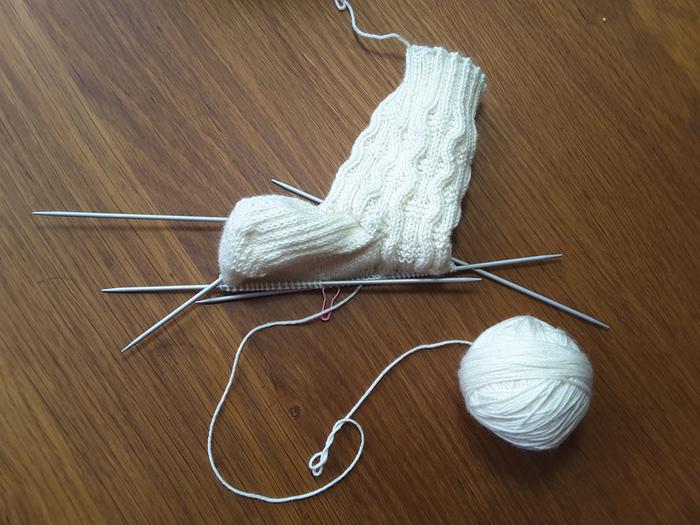

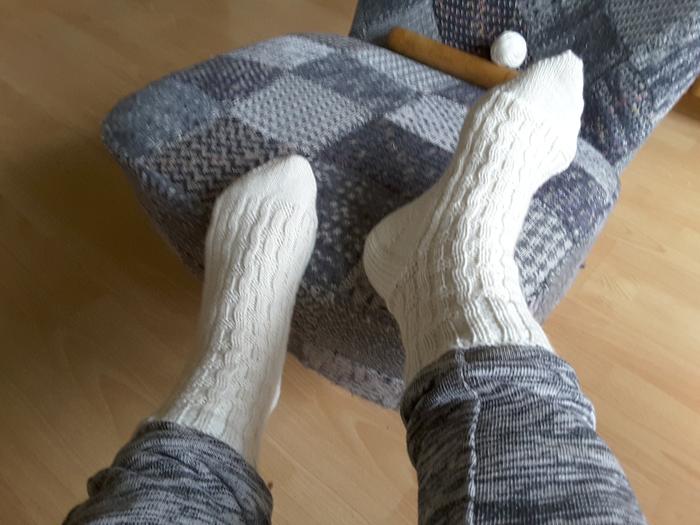
"Also, just as you want men to do to you, do the same way to them" (Luke 6:31)
Nicole Alderman approved this submission.
Note: I hereby certify that this badge bit is complete--and that those socks look super cozy!
 4
4




Pick up and knit 9 sts along the edge of heel flap,
PM, work in pattern across top of foot, working the garter panel
as established, PM, pick up and knit 9 sts along
heel flap, k5 sts, place new BOR marker (located at the
bottom of the foot). 44 sts]
Round 1: knit
Round 2: knit to 3 sts before marker, k2tog, k1, SM, work in pattern across top of foot to marker, SM, k1, ssk, knit to end [2 sts dec] Work rounds 1-2 a total of 5 (6, 7, 8, 8, 9) times. This is 12 rounds. 32 sts]










Nicole Alderman wrote:"Knit socks" they said. "It would be easy," they said.
I'm using this pattern: https://tincanknits.com/pattern/rye
I did the heal flap. I did the heal turn. I think I did the picking up stitches so now I'm back to one big circle. But I can't make heads or tales of this:
Pick up and knit 9 sts along the edge of heel flap,
PM, work in pattern across top of foot, working the garter panel
as established, PM, pick up and knit 9 sts along
heel flap, k5 sts, place new BOR marker (located at the
bottom of the foot). 44 sts]
Round 1: knit
Round 2: knit to 3 sts before marker, k2tog, k1, SM, work in pattern across top of foot to marker, SM, k1, ssk, knit to end [2 sts dec] Work rounds 1-2 a total of 5 (6, 7, 8, 8, 9) times. This is 12 rounds. 32 sts]
Where is the beginning of my "row"? I thought it was smack-dab in the middle of the bottom of the foot. But "round 2" makes no sense. I'm supposed to knit until 3 stitches before the end of the row, and then "k2tog, k1, SM, work in pattern across top of foot to marker, SM, k1, ssk, knit to end [2 sts dec] Work rounds 1-2 a total of 6 times. This is 12 rounds. 32 sts]"
Why am I knitting more if I've come to the end of the row? What are those "SM"s? Am I supposed to be putting in markers? I am so utterly lost. And feel very stupid, because this was supposed to be an "EASY" pattern for beginners, and I'm failing here.
"Also, just as you want men to do to you, do the same way to them" (Luke 6:31)
 6
6




Once you make a decision, the universe conspires to make it happen. - Ralph Waldo Emerson
Nicole Alderman approved this submission.
Note: I hereby certify that this badge bit is complete, and congratulate you on your Textile air badge!
 1
1




Kevin's offshoot of PEX: http://uhspr.ca/merit-badges/






 2
2




"Also, just as you want men to do to you, do the same way to them" (Luke 6:31)
 5
5




She girdeth her loins with strength, and strengtheneth her arms. - Proverbs 31:17
Inge Leonora-den Ouden approved this submission.
Note: Great socks!
 1
1




K McFarlane wrote:This is my first post so apologies if I'm missing anything!
Cargo bikes are cool
 1
1




Edward Norton wrote:
Hi K - welcome to Permies. What a great first post. Those socks are fantastic and I want some of that wool. I only recently started knitting and have had lots of help here in the forums and the few textile PEP posts I’ve made.
Do you have the label for the wool or any way to prove it’s 100% wool? Permies is full of lovely people but the PEP rules are pretty strict with not much wiggle room - I should know, I’ve failed plenty for missing all the requirements. I’d hate to see your first post rejected. If it is then I hope it inspires you to knit some more - I guess in the Highlands, you can never have too many woollen socks.
I look forward to seeing more of your knit-ware.
She girdeth her loins with strength, and strengtheneth her arms. - Proverbs 31:17








Vallen Powell wrote:If I knit really tight can I use 4mm needles? If I use anything smaller with my yarn I won’t be able to knit it it will be so tight.

Once you make a decision, the universe conspires to make it happen. - Ralph Waldo Emerson










Vallen Powell wrote:If I knit really tight can I use 4mm needles? If I use anything smaller with my yarn I won’t be able to knit it it will be so tight.
"Also, just as you want men to do to you, do the same way to them" (Luke 6:31)










Not today, satan.
 1
1




 2
2




Once you make a decision, the universe conspires to make it happen. - Ralph Waldo Emerson
 1
1




 1
1




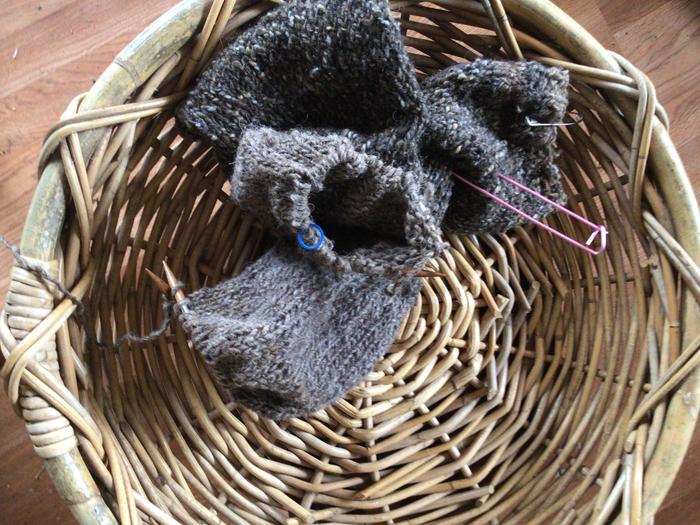
Perfect The Dwelling Land and support the kickstarter! https://www.kickstarter.com/projects/paulwheaton/garden-cards?ref=90v0pa
Someone approved this submission.






 1
1




Being weird is easy. Making it mainstream is hard. Be brave! https://www.youtube.com/@healthygreenbrave
Inge Leonora-den Ouden approved this submission.
Note: Interesting pattern, I never saw this before (I only know socks knitted in the round)

|
If you are using a wood chipper, you are doing it wrong. Even on this tiny ad:
The new gardening playing cards kickstarter is now live!
https://www.kickstarter.com/projects/paulwheaton/garden-cards
|


